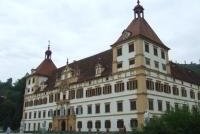
Because there is so much to see in this city I set out early heading first for the Schlossberg for an overview. I too the lift to the Uhrturm an excellent viewpoint. I then walked up to the bell tower before decending by funicular.
From there I walked to the Hauptplatz to see the decorated buildings along the Herrengasse. I particularly liked the courtyard of the Landzeughaus, but was disturbed to find portraits of Hitler and Mussolini in stained glass in the parish church.
I found the trams of Graz very easy to navigate, and travelled by tram #1 to Schloss Eggenburg on the edge of the city. The palace was interesting, but the peacocks strutting around outside I found more entertaining.
Back in the city centre again I enjoyed visiting the cathedral, Burg, and Mariahilferplatz as well as the food stalls in Jacominplatz.
Keep reading 0 comments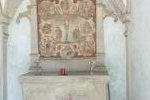
I reached Reichenau Island by bus from Reichenau station on the mainland. After crossing the causeway the bus took me to Mittelzell, close to the museum and the church of SS Mary & Mark.
From there I took the island bus to Neiderzell where I visited the church of SS Peter & Paul. Next stop was the ferry dock where I visited the nearby mansion of Konigsegg, before going on to Oberzell and the church of St George.
From Oberzell I returned on foot across the causeway, stopping to see Schopflen, a ruined mansion, and the Kinderbild chapel, with its simplistic artworks on the way.
Keep reading 0 comments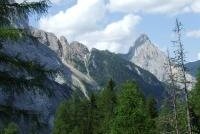
Because there are no railways within the Dolomites, I rented a car from Bolzano station to explore the area. I decided to stay at Passo Costalunga, near Vigo di Fassa. From there I made excursions to various areas within the huge Dolomite area.
One day I went to Marmolada (area 2) via Canazei and hiked around Lake Fedaia. Then I drove to Malga Ciapela and took a cable car to the summit of Marmolada. Later I returned to Canazai via Livinallongo, Arabba and Passo Pordoi all of which provided splendid views of the mountains.
Another day I drove via Aldino and the Rio del Foglie gorge (area 8) to Lake Molveno and the Brenta Mountains (area 9). On the way back I stopped at Spormaggiore village to visit the bears and wolves in the forest nearby.
I drove through the Sciliar-Catinaccio (area 7) to reach Castelrotto, then continued through the Val Gardena, over the Passo di Sella and returned via Canazei.
The last excursion was to the verdant area of San Martino di Castrozza, overlooked by the towering Pale di San Martino. Stopped to hike from the Passo di Valles to view the massive Vezzana peak.
Driving in the Dolomites was more relaxed and pleasant than any I had seen in other parts of Italy.
Keep reading 0 comments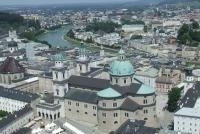
Although very touristy I enjoyed my visit to Salzburg. The highlight was the Hohensalzburg fortress from where the views were stunning. It was in my opinion overpriced: E7.40 to walk up or E10 to ride the funicular.
Also interesting was St Peter's monastery and the Nonnburg monastery.
Trolleybuses 3, 5 or 6 from the station to the Rathaus saved a long tedious walk.
Keep reading 0 comments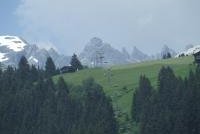
I visited the Sardona range from two sides. From the north by the bergbahn from Flims, accessed by postbus from Chur. The next day I approached from the south, by cable car from Elm, accessed by Postbus from Schwanden.
More of the tectonic area is visible from the south side.
Keep reading 0 comments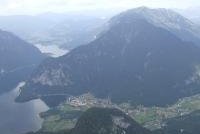
I agree that this should have been a combined natural and cultural site.
I stayed at Obertraun and took a ferry from there to Hallstatt Markt, returning again later by bus from Hallstatt Lahn.
The bus also took me up to the Obertraun cable car station from where I was conveyed in two cars to the summit of Krippenstein, a part of the Dachstein Massif. I hiked from there to the 5 fingers, a lookout that is cantilevered over the edge of a 400 metre cliff. The views over the Hallstattersee and the Dachstein massif were extensive.
Descending by the upper cable car I then visited the Ice Cave, a much larger series of ice filled undergound galleries than I had expected. The formations into which the ice had contorted itself was fascinating.
Keep reading 0 comments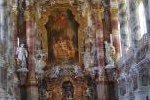
The exterior of this church, although in fine condition belies the beauty that lies within. The stark white interior is decorated with colouful paintings on the walls and ceilings. The coloured marble columns add to the spectacle with extensive gilt mouldings.
I reached the village of Wies by bus #73 from Fussen station, but after the visit continued by bus #9606 to Garmisch-Partenkirchen.
Keep reading 0 comments
I just visited this site a week before with my wife during our one week trip in Mauritius.
Actually I have went the palce twice, first day I can't find the entry and just took a picture due to Sunday.So I went to the site on Monday again.
I didn't know there is a World Heritage in Port Louis before, I just happen to meet the site while we walk through the main street.
Keep reading 0 comments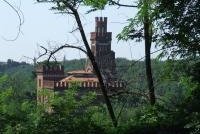
Although the factories fell silent in 2003, the residential areas are still occupied and well maintained. The church, school and theatre are periodically open to visitors. But the Villa Padronale, the castle residence of Cristiforo Crespi is not open.
I reached Crespi d'Adda from Milan by taking the Matro to Gessate, then bus #Z310 to the terminus at Trezzo sul Adda. From there I crossed the bridge over the river to Capriate and followed the riverside road to the site.
Keep reading 0 comments
The old center of Sarajevo is an architectural, cultural and sensory delight. The presence of turn-of-the century art nouveau/art deco decorated buildings with Austrian-Hungarian styles; the beautiful mosques and small bazaars with their reminders of the Ottoman heritage; and finally the great mixture of people with a wide range of traditional and modern dress and appearance and the smells of roasting meats- all together makes for an unforgetable experience.
Keep reading 0 comments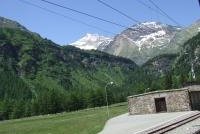
My journey from Milan to Chur took place on a perfect clear day. Starting out early from Milan Centrale the train skirted the east shore of Lake Como and then entered the terraced, vine clad Val Tellina which led to Tirano on the Swiss border.
Here I left the Italian station and walked next door to the Swiss one. People were queueing here to take the expensive Bernina Express, but I took the empty regional train, better because it is cheaper and the windows open for taking photographs.
After travelling through the streets of Tirano the train crossed the border and started the scenic climb around spirals, over bridges, through tunnels and across viaducts to reach the Bernina Pass. At this altitude the scenery was of mountains, glaciers, lakes, streams and a carpet of wild flowers.
Descending to Thusis the line then levelled out and the Sardona peaks came into view as we approached Chur.
Keep reading 0 comments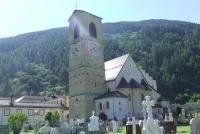
The highlight of this WHS is the brightly coloured expanse of frescoes inside the church. But almost as interesting was a visit to nearby Mustair village, located deep in the Romansch-speaking region of Switzerland. I reached Mustair by postbus from Zernez station, passing through the scenic Swiss National Park en route. The bus continues from Mustair to Malles station (Italy), another point of access.
Keep reading 0 comments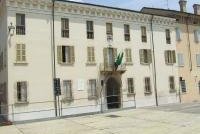
I do not understand why these two towns are linked in one site; there do not appear to have any physical connection. Mantova is reached by train from Verona and Padova (in the Veneto) while Sabbioneta is reached by bus from Parma or Casalmaggiore.
From Mantova station a bus CC circulates around the sites, first to Piazza Erbe for Piazzas Sordello and Broletto and the Ducal Palace, then to Porta Pusteria for Palazzo Te.
The pristine town of Sabbioneta is so small that it can easily be walked around.
Keep reading 0 comments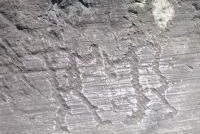
I travelled by train from Brescia to Capo di Ponte, and from the station climbed up to the park of Naquane as has been described below. Afterwards I returned to the village, crossed the river and found two further areas of rock engravings.
The Massi di Cemmo comprises two large engraved rocks in a field.
The Seradina-Bedolina area is much larger and involves much scrambling over rocks. But the engraved rocks are marked and easy to find.
Keep reading 0 comments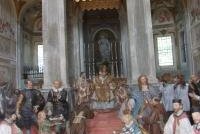
Of the eight sites that I visited, there were few similarities. Most had artistic and colourful dioramas depicting scenes on different Biblical themes.
Belmonte - I reached by train from Turin Porta Susa to Valperga, then a long climb up via Battista led to the Sacro Monte. The road became a slippery track, and the shrines were in poor condition
Oropa - I reached by bus #2 from Biella San Paolo station to the sanctuary. The Sacro Monte was easily reached on an adjacent hillside
Ossuccio - I reached by bus #C10 from Como's San Giovanni station. Two routes led to Piazza San Giovanni, the via del Santuario and the steeper via Castello. The first of the shrines adjoins the piazza. The views of Lake Como alone make the climb worthwhile
Varallo Sesia - I reached by train from Novara. A cable car took me swiftly from the village to the Sacro Monte on a rocky plateau overlooking the village
Orta San Giulio - was a short walk from Orta Miasino station. The shrines here have stunning dioramas
Domodossola - I walked from the station to via al Calvario where I found the first two shrines, from where a muddy track led up the the others
Ghiffa - I took a bus from Verbania station to Intra, then another to Ronco village. From here it was still quite a climb up to the Sacro Monte
Varese - I reached by bus C from the station to the sanctuary and the …
Keep reading 0 comments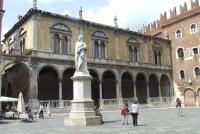
I found the core of the city's heritage sites to be in the Piazza del Erbe and the adjacent Piazza dells Signora. Here there were decorated builings in assorted styles, towers, archways and not far away, excavations of the Lion Gate. Further away to the north is the monumental cathedral, to the west beside the river is the Castelvecchio, and to the south is the Roman arena in Piazza Bra. This was the scene of a pop concert on the day of my visit.
Apart from catching buses to and from Porta Nuova station there was no public transport available, so I had more than enough exercise visiting all these sites.
Keep reading 0 commentsjohn booth
Portovenere, Cinque Terre, and the Islands
Portovenere, Cinque Terre, and the Islands (Inscribed)
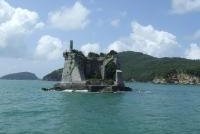
Visiting the five coastal villages was very easy using the frequent train services. Too easy, for although the villages were colourful and picturesque, they were also overcrowded with tourists and the accompanying fast food and souvenir stalls.
So when I went by bus P from La Spezia to Portovenere I was areeably surprised to find an equally colourful village, but without the crowds.
I walked through the narrow street in the centre of the village to see St Peter's church and Byron Bay, then returned along the waterfront.
After a sumptuous seafood lunch I took a cruise to see the three islands with their exposed cliffs and abandoned monasteries.
Keep reading 0 comments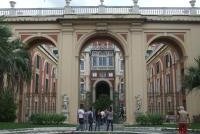
Only a few metres down via Balbi from the Piazza Principe station is the huge Palazzo Reale. Passing through the entrance I came to a spacious courtyard with an arched gateway leading to the garden overlooking the port of Genova.
Suitably impressed I continued past several other palazzi lining via Balbi, Cairoli and Garibaldi before reaching the stately Piazza Fontaine Morose.
Returning to the station I visited the interior of Palazzi Spinola, Rosso and Bianca and diverted to visit the narrow streets of La Madelena, via San Luca and via Lomellini.
Keep reading 0 commentsjohn booth
Residences of the Royal House of Savoy
Residences of the Royal House of Savoy (Inscribed)
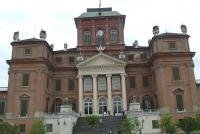
In Turin I was unprepared for the magnitude of the Piazza Castello, with musicians, buskers and a brass band providing entertainment. Around this expanse of paving were most of the buildings included in the WHS including the Palazzo Madama and the more staid Palazzo Reale. Other buildings were to be found in the adjacent streets.
A short distance away, on a hill to the east was the Villa della Regina, reached by bus #56. The Castello del Valentino, beside the Po river was reached by bus #34.
Further away from Turin I visited the Castello di Racconigi and Castello di Moncalieri both large brick buildings and both reached by trains from Porta Nova station.
Pollenzo estate, now the university of food sciences, is reached by bus #2 from Bra.
Venaria Reale and its Mandria hunting lodge cover a large area of countryside, are reached by the Venaria Express bus from Porta Nova station.
The crumbling Castello di Rivoli is reached by bus #36 from Paradiso metro station, then by navette up to the castle from where there is a fine view of Turin.
The Palace of Stupenigi, also in the middle of a huge park, is reached by bus #41 from Lingotto station.
The Castello di Aglie with its elaborately frescoed ballroom is reached by train from Porta Susa station to Rivarolo, then by bus to Aglie. This site is conveniently close to the Sacro Monte of Valperga.
Keep reading 0 comments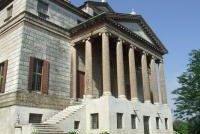
Being a fan of Palladio's architecture I spent several days visiting the listed sites. One day was spent in Vicenza alone visiting the plethora of his buildings along Corso Palladi and its side streets and adjacent piazzas in the Historic Centre. The Palazzo Chiericati, the Loggia del Capitaniato, the Palazzo Porto Braganza and the Palazzo Valmarana Braga epitomised for me the essence of his designs.
Further away from the Historic Centre I liked :
the Loggia Valmarana, overlooking the Giardini Salvi
Villa Capra (La Rotunda) reached by bus #8 from Vicenza via the Arco delle Scarletta
Villa Gazzotti Grimani at Bertesina reached by bus #1 from Vicenza
Villa Badoer at Fratta Polesine, reached by train from Rovigo
Villa Foscari at Malcontenta, reached by bus #11 from Venice Mestre
Villa Cornaro at Piombino Dese, reached by train from Venice Mestre
Villa Emo at Fanzolo, reached by train from Padova
Villa Valmarana Brassano at Montecello Conte Otto, reached by train from Vicenza to Cavazzale
Villa Godi and the adjacent Villa Piovene in Lugo di Vicenza, reached by bus from Thiene bus station
Because of the restricted opening hours, most of these buildings were viewed from the exterior only.
Keep reading 0 comments